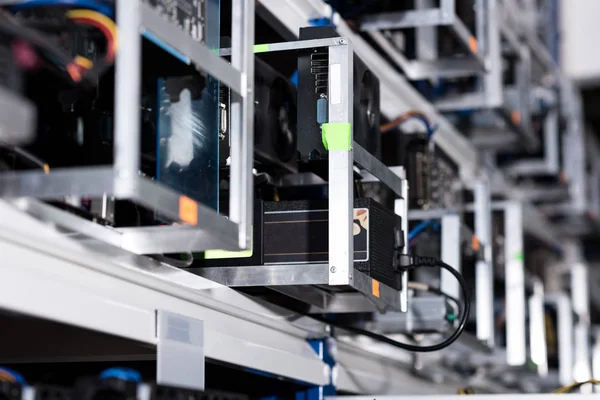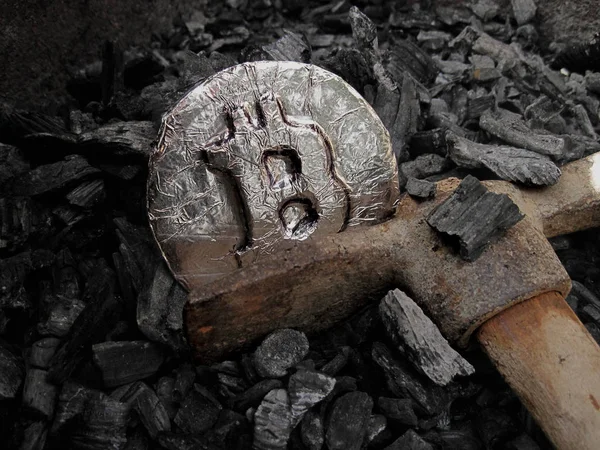Cryptocurrency mining has become a buzzword in the financial technology sector as investors seek to tap into the lucrative yet volatile crypto market. This digital gold rush involves the use of computational power to solve complex mathematical puzzles, thereby validating transactions and securing the blockchain network. However, determining the viability of this endeavor necessitates a deep dive into various factors influencing return on investment (ROI). From initial setup costs to the rapidly changing landscape of the crypto world, prospective miners must carefully evaluate the potential rewards against the risks. In this article, we examine the crucial aspects that shape the profitability of cryptocurrency mining as an investment strategy.
Assessing Crypto Mining ROI

When venturing into cryptocurrency mining, the first metric to consider is the return on investment (ROI). This calculation is crucial in understanding the potential profitability of mining operations. To accurately assess ROI, investors must:
- Calculate total investment costs, including mining hardware, software, and infrastructure.
- Estimate the expected yield in terms of mined cryptocurrency over a specific period.
- Monitor the performance and adjust the mining setup to optimize efficiency.
- Consider the resale value of mining equipment as part of the ROI calculation.
- Keep abreast of technological advancements that could render the current mining setup obsolete.
- Factor in the taxation and legal considerations that may affect the net returns.
Costs Vs. Gains Analysis

A comprehensive costs versus gains analysis is essential for evaluating the investment in crypto mining. Investors must:
- Account for the upfront costs of mining equipment and any additional components required to create an efficient mining rig.
- Include ongoing expenses such as maintenance, repairs, and upgrading of hardware.
- Assess electricity costs, which are significant in the mining process and can vary widely by region.
- Analyze the potential income from mining, factoring in the current value of the cryptocurrency being mined and the expected block rewards.
- Project long-term gains, considering the likelihood of currency appreciation over time.
- Evaluate the break-even point, where the total gains from mining equal the initial and ongoing costs.
Mining Hardware Lifespan

The lifespan of mining hardware is a critical factor in evaluating the sustainability of a mining investment. The key points to consider include:
- The average effective lifespan of mining hardware before it becomes outdated or inefficient.
- The depreciation rate of mining equipment, influenced by the pace of technological innovation.
- The potential for hardware resale, which can recoup some of the initial investment.
- The warranty and repair options available for mining equipment.
- The impact of hardware failure rates on overall operational costs and downtime.
- The necessity for continuous investment in hardware to maintain competitive mining capabilities.
Energy Expenses Overview

Energy consumption is one of the largest operating expenses in cryptocurrency mining. A detailed energy expenses overview should encompass:
- The kilowatt-hour (kWh) cost of electricity in the miner’s location, which directly impacts profitability.
- The energy efficiency of the mining hardware, often measured in joules per gigahash (J/GH).
- Trends in energy prices and their potential impact on long-term mining costs.
- The possibility of utilizing renewable energy sources to reduce costs and environmental impact.
- The role of energy consumption in the overall environmental footprint of crypto mining.
- Incentives or rebates offered by governments or energy companies for energy-efficient operations.
Market Volatility Impact

Cryptocurrency markets are notorious for their volatility, which has a profound impact on mining investments. The market volatility can:
- Affect the value of the mined currency, thus influencing the revenue from mining operations.
- Lead to rapid changes in network difficulty, affecting the number of coins mined.
- Cause fluctuations in the cost of mining hardware due to shifting demand.
- Require miners to be agile, ready to switch between cryptocurrencies as market conditions change.
- Impact the decision to hold or sell mined currency based on market predictions.
- Highlight the importance of diversification within the investment portfolio to mitigate risks.
Future of Mining Investments

The future of mining investments is shaped by several emerging trends and predictions:
- The increasing adoption of proof-of-stake (PoS) and other consensus mechanisms that could potentially decrease the relevance of traditional mining.
- The development of more energy-efficient mining technologies that could reduce operational costs.
- Potential regulatory changes that could either positively or negatively affect the mining landscape.
- The scaling of blockchain networks, possibly affecting transaction validation processes and rewards.
- The growth of mining pools and cloud mining services, offering alternative investment opportunities.
- The integration of artificial intelligence and machine learning to optimize mining operations and increase efficiency.
| Comparison of Key Investment Considerations | Traditional Asset Classes | Crypto Mining |
|---|---|---|
| Initial Capital Expenditure | Low to High | Medium to High |
| Ongoing Operational Costs | Low to Medium | Medium to High |
| Market Volatility | Low to High | Very High |
| Technological Obsolescence | Low to Medium | Very High |
| Regulatory Environment | Stable to Changing | Highly Uncertain |
| Potential ROI | Variable | High (with increased risk) |
In summary, cryptocurrency mining presents a complex investment landscape riddled with both opportunities and challenges. Evaluating the various aspects from ROI to the future outlook is imperative for investors looking to navigate this space. With considerations such as hardware lifespan, energy costs, market volatility, and looming regulatory changes, the decision to invest in crypto mining must be made with diligence and an understanding of the dynamic nature of the industry. As the cryptocurrency market continues to evolve, so too will the strategies for successful and sustainable mining investments.


